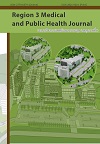Reducing Waiting Time for facial Fracture Surgery by a New Surgical Queue
Keywords:
facial fracture, surgical queuingAbstract
Objectives : The study aimed to compare the number of waiting days for facial surgery and length of stay in hospital between the traditional and the new queuing management.
Method : A retrospective non-randomized cohort study has been done. Samplings were patients with facial fracture requiring surgery at Prapokklao Hospital and were divided into 2 groups – the first, control group of 97 patients with traditional queuing based on the surgeon’s schedule from July 1, to December 31, 2020 and the latter, the experimental group of 83 patients with new way queuing pool from January 1 to June 30, 2021. The differences between the 2 groups were compared with statistical Mann-Whitney U test, statistically significant level was set at P value was less than 0.05(P<0.05).
Results : The mean age of the control group was 34.8±15.3 years and the latter was 36.1±14.8 years. The mean of waiting time for surgery in the control group was 4.9±4.2 days whereas the latter was 4.5±3.3 days (P-value = 0.81), the mean of length of stay in the first group was 9.6±9 days and the other was 7.4±4.6 days (P value = 0.20)
Conclusion : The scheduling of facial fracture patients with the pool queue can reduce waiting time for surgery and length of stay in the hospital comparing to the traditional management with no statistically significant level.
Keywords : facial fracture, surgical queuing
References
Rothweiler R, Bayer J, Zwingmann J, Suedkamp NP, Kalbhenn J, Schmelzeisen R, et al. Outcome and complications after treatment of facial fractures at different times in polytrauma patients. J Craniomaxillofac Surg 2018;46(2):283-7.
Rohrich RJ, Shewmake KB. Evolving concepts of craniomaxillofacial fracture management. Clin Plast Surg 1992;19(1):1-10.
Ricketts S, Gill HS, Fialkov JA, Matic DB, Antonyshyn OM. Facial fractures. Plast Reconstr Surg 2016;137(2):424e-44e.
Damgaard OE, Larsen CG, Felding UA, Toft PB, von Buchwald C. Surgical timing of the orbital "Blowout" fracture: a systematic review and meta-analysis. Otolaryngol Head Neck Surg 2016;155(3):387-90.
Lander DP, Lee JJ, Kallogjeri D, Stwalley D, Olsen MA, Piccirillo JF, et al. The impact of treatment delay on malunion and nonunion after open reduction of mandible fractures. Facial Plast Surg Aesthet Med 2021;23(6):460-6.
Czerwinski M, Parker WL, Correa JA, Williams HB. Effect of treatment delay on mandibular fracture infection rate. Plast Reconstr Surg 2008;122(3):881-5.
Becelli R, Renzi G, Perugini M, Iannetti G. Craniofacial traumas: immediate and delayed treatment. J Craniofac Surg 2000;11(3):265-9.
Stacey DH, Doyle JF, Mount DL, Snyder MC, Gutowski KA. Management of mandible fractures. Plast Reconstr Surg 2006;117(3):48e-60e.
Ellstrom CL, Evans GRD. Evidence-based medicine: zygoma fractures. Plast Reconstr Surg 2013;132(6):1649-57.
Chung KJ, Kim YH, Kim TG, Lee JH, Lim JH. Treatment of complex facial fractures: clinical experience of different timing and order. J Craniofac Surg 2013;24(1):216-20.
Hurrell MJ, Batstone MD. The effect of treatment timing on the management of facial fractures: a systematic review. Int J Oral Maxillofac Surg 2014;43(8):944-50.
Hermund NU, Hillerup S, Kofod T, Schwartz O, Andreasen JO. Effect of early or delayed treatment upon healing of mandibular fractures: a systematic literature review. Dent Traumatol 2008;24(1):22-6.
World Health Organization. International statistical classification of disease and related health problems. 10th ed. Geneva: World health organization; 2010.
Suriyawongpaisa P, Thakkinstian A, Rangpueng A, Jiwattanakulpaisarn P, Techakamolsuk P. Disparity in motorcycle helmet use in Thailand. Int J Equity Health 2013;12:74.
Pungrasmi P, Haetanurak S. Incidence and etiology of maxillofacial trauma: a retrospective analysis of King Chulalongkorn Memorial Hospital in the past decade. Asian Biomedicine 2018;11(4):353-8.
Boonkasem S, Rojanaworarit C, Kansorn S, Punkabut S, Thailand. Incidence and etiology of maxillofacial trauma: a retrospective analysis of patients attending a provincial hospital in northern Thailand. Journal of Public Health and Development 2015;13:57-71.
Phillips BJ, Turco LM. Le Fort Fractures: a collective review. Bull Emerg Trauma 2017;5(4):221-30.
Biller JA, Pletcher SD, Goldberg AN, Murr AH. Complications and the time to repair of mandible fractures. Laryngoscope 2005;115(5):769-72.
Jaicks RR, Cohn SM, Moller BA. Early fracture fixation may be deleterious after head injury. J Trauma 1997;42(1):1-5; discussion -6.
Weider L, Hughes K, Ciarochi J, Dunn E. Early versus delayed repair of facial fractures in the multiply injured patient. Am Surg 1999;65(8):790-3.
Lee DW, Choi SY, Kim JW, Kwon TG, Lee ST. The impact of COVID-19 on the injury pattern for maxillofacial fracture in Daegu city, South Korea. Maxillofac Plast Reconstr Surg 2021;43(1):35.
Downloads
Published
How to Cite
Issue
Section
License
Copyright (c) 2022 Region 3 Medical and Public Health Journal - วารสารวิชาการแพทย์และสาธารณสุข เขตสุขภาพที่ 3

This work is licensed under a Creative Commons Attribution-NonCommercial-NoDerivatives 4.0 International License.



